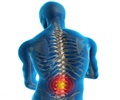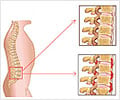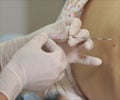Noninvasive stimulation used to temporarily improve the ability of the use of paralyzed hands in people with spinal cord injury.

The researchers tested the new method in 19 people with chronic cervical spinal cord injury and 14 uninjured people. The treatment was customized to each individual and paired transcranial magnetic stimulation delivered to a specific part of the motor cortex with electrical stimulation to peripheral nerves found in the wrist.
One hundred paired pulses were delivered every 10 seconds for a period of around 20 minutes to produce volleys of neural activity. The timing of arrival of those volleys in the spinal cord was absolutely essential to the treatment's success, the report shows.
Source-Eurekalert















